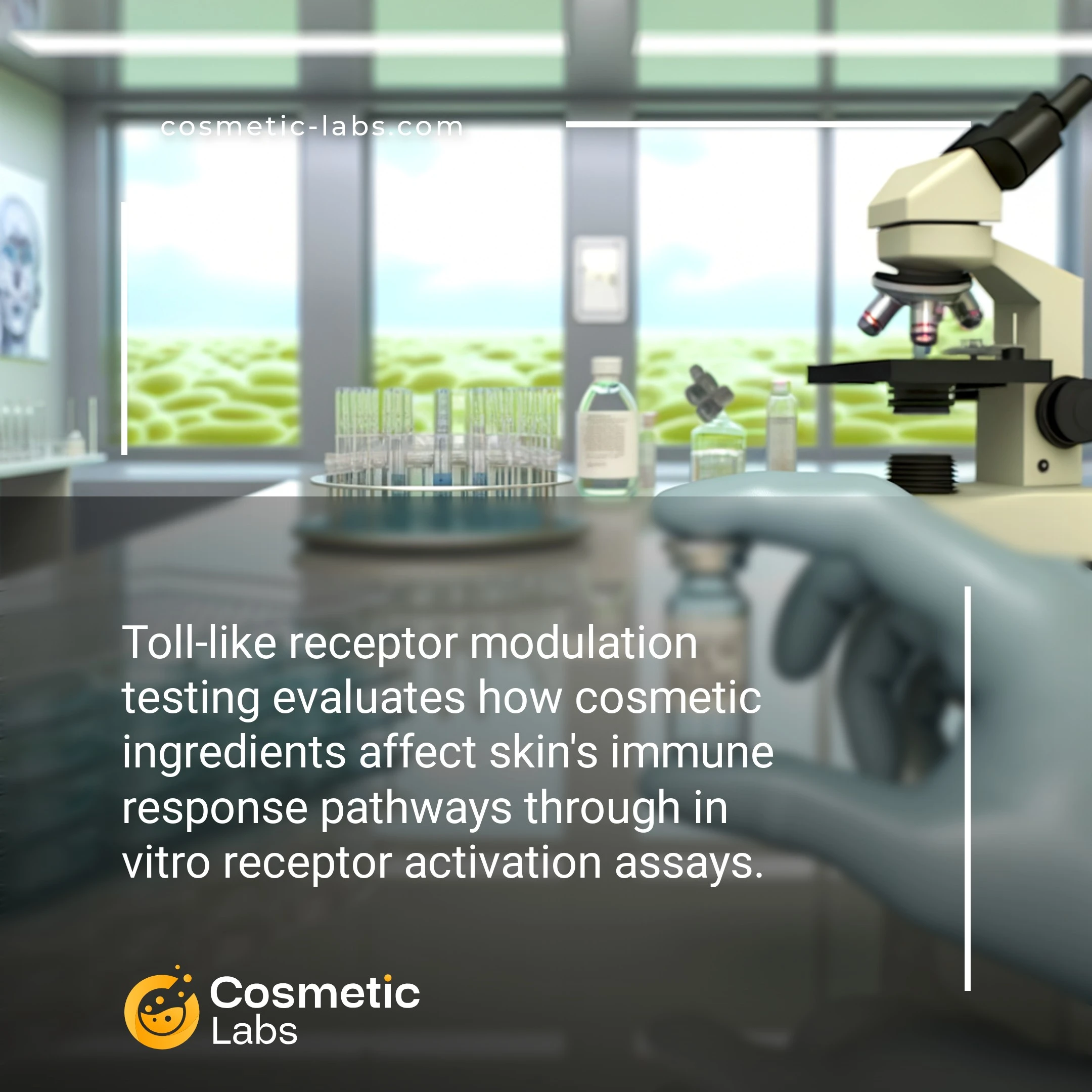Toll-Like Receptor Testing for Skin Immunity Validation

What is Toll-like receptor modulation?
Toll-like receptor modulation testing for skin immunity is a preclinical service that measures how cosmetic ingredients influence the skin’s innate immune response pathways. Labs use cell-based assays and biomarker analysis to evaluate whether your formulations enhance or suppress TLR signaling, which controls inflammation and barrier function. This testing helps you validate anti-aging claims and develop products that support healthy skin immunity without triggering unwanted inflammatory responses.
Why do you need this service?
Cosmetic labs use TLR pathway analysis to validate anti-inflammatory claims for sensitive skin formulations and measure immune response modulation in acne treatments. Teams test ingredient combinations against specific TLR receptors to demonstrate clinically relevant skin barrier protection, providing the regulatory documentation you need for product launches targeting compromised or reactive skin conditions.
Who provides Toll-like receptor modulation services?
All cosmetic labs providing Toll-like receptor modulation services
There is no company providing these services at the moment.
Toll-Like Receptor Modulation Testing for Skin Immunity
Toll-like receptor modulation testing evaluates how cosmetic ingredients interact with the skin’s innate immune system. This specialized testing measures your product’s ability to activate or suppress TLR pathways, providing data on immune response modulation for anti-aging and protective formulations.
TLR Pathway Analysis Methods
Labs use cell-based assays to measure TLR activation across multiple receptor subtypes. These tests track cytokine production and inflammatory marker expression in response to your ingredients.
Common testing protocols include:
- TLR2/4 reporter cell assays for bacterial recognition pathways
- TLR7/8 activation studies for antiviral immunity
- NF-κB pathway analysis for downstream immune signaling
- Dose-response curves to determine optimal concentrations
Results help formulators optimize ingredient ratios for desired immune modulation effects.
Applications in Cosmetic Development
TLR modulation data supports claims for immune-boosting serums, barrier repair creams, and anti-inflammatory products. Labs test both individual ingredients and complete formulations to validate skin immunity enhancement properties.
Testing applications include:
- Prebiotic cosmetics that support beneficial skin microbiome
- Anti-aging products targeting immune-mediated skin aging
- Sensitive skin formulations requiring controlled immune responses
- Post-procedure skincare with targeted healing properties
Partner with specialized labs on our platform to access TLR testing expertise for your next immunity-focused product launch.
Practical Applications of Toll-Like Receptor Modulation Testing
Toll-like receptor modulation testing provides cosmetic brands with concrete data on how formulations interact with skin’s innate immune pathways, enabling evidence-based claims and targeted product development.
Anti-Aging and Barrier Repair Formulations
Labs evaluate how active ingredients influence TLR2 and TLR4 signaling to support skin barrier function and reduce inflammation markers. Testing protocols measure cytokine expression changes, particularly IL-1β and TNF-α levels, after 24-48 hour exposure periods. Brands use this data to validate claims about barrier strengthening and anti-inflammatory benefits.
Results typically show 15-40% reductions in inflammatory markers for effective formulations. This testing proves particularly valuable for peptide-based serums, botanical extracts, and ceramide-rich moisturizers targeting mature skin concerns.
Sensitive Skin and Microbiome-Friendly Products
Testing services assess how formulations modulate TLR recognition of beneficial versus harmful microorganisms. Labs measure differential immune responses to commensal bacteria like S. epidermidis compared to pathogenic strains. This data supports claims about microbiome compatibility and gentle formulation benefits.
Testing protocols include co-culture studies with keratinocytes and specific bacterial strains. Results guide formulation adjustments for probiotics, prebiotics, and pH-balanced cleansers designed for reactive skin types.
| Testing Parameter | Measurement Method | Typical Timeline | Key Applications |
|---|---|---|---|
| TLR2/4 Expression | qPCR Analysis | 48-72 hours | Anti-aging, barrier repair |
| Cytokine Profiling | ELISA/Multiplex | 24-48 hours | Anti-inflammatory claims |
| Bacterial Recognition | Co-culture studies | 5-7 days | Microbiome products |
| Immune Cell Activation | Flow cytometry | 6-24 hours | Sensitive skin formulations |
Connect with specialized labs on our platform to discuss TLR modulation testing protocols that align with your product development goals and regulatory requirements.
